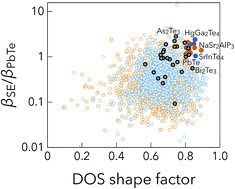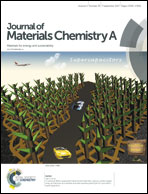Search for new thermoelectric materials with low Lorenz number
Abstract
To date, efforts to reduce thermal conductivity in thermoelectric materials have largely focused on reducing the vibrational component. However, in an optimized thermoelectric material, the electronic component can often contribute an equivalent amount to the total thermal conduction. In principle, the Lorenz number of a bulk semiconductor can be reduced to a small fraction of the Sommerfeld value through the use of a band-pass energy filter in the transport distribution function. One strategy to achieve this band-pass filter is through multiple bands that are offset in energy. Despite a reduction in power factor, we show that a lower Lorenz number can lead to zT enhancement of nearly 40% over the single parabolic band value for materials with electronic properties similar to PbTe. One signature for this behavior is a density of states that rapidly increases deeper into the band. Guided by this insight, we conducted a high-throughput computational search for materials with exceptionally low Lorenz number and high thermoelectric quality factor. From this search, we identify materials that are predicted to have both high quality factor and low Lorenz number. Intriguingly, we find that the vast majority of known thermoelectric materials exhibit these traits; further, new materials have emerged that warrant further investigation.



 Please wait while we load your content...
Please wait while we load your content...